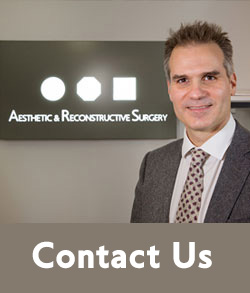What is Autologous Mesotherapy and how does it work?
Autologous Mesotherapy is an innovative and effective method for skin regeneration and facial radiance.
This treatment uses and harnesses the properties of our own blood, utilizing growth factors (such as PDGF, VEGF, TGF-β, and EGF).
The release of these growth factors, as well as other platelet components, is enhanced by enriching the plasma with substances such as calcium chloride and nucleotides. In combination with collagen production, this results in skin regeneration with natural and long-lasting effects.
Where is Autologous Mesotherapy applied?
The main applications of Autologous Mesotherapy include:
– Deep hydration and epidermal tightening
– Smoothing wrinkles (face, neck, chest)
– Radiant, healthy appearance and skin regeneration
– Reduction of pores and improvement of acne scars
– Improvement of dark circles and eye wrinkles
– Treatment of stretch marks – either as a stand-alone therapy or in combination with CO₂ Fractional Laser
– Reduction of postoperative scars and wounds
In general, combining Autologous Mesotherapy with CO₂ Fractional Laser treatment has clear indications and yields excellent results, multiplying the skin’s regeneration rate through collagen production.
What are the main advantages of this method?
The key advantages of Autologous Mesotherapy are:
– It uses the patient’s own components, making its mechanism of action natural
– Safe and easy application; since the plasma is derived from the patient, the risk of allergy is virtually nonexistent
– Long-lasting results
– Boosts collagen production while rejuvenating the skin
– Naturally remodels wrinkles, helping them to fade away
How is Autologous Mesotherapy performed?
The procedure begins with drawing a small amount of blood (5–15 ml) from the patient. The blood is then centrifuged to isolate the plasma, which is rich in platelets, from the other components.
After separation, the plasma is activated by adding a nucleotide solution (DNA Activator) and calcium ions (Ca++). The resulting platelet-rich plasma mixture is injected in the same way as in conventional (heterologous) mesotherapy.
Specifically:
Injectable AutologousMesotherapy (Needling)
Injectable autologous mesotherapy is performed with a very fine needle (30G), injecting the solution directly into the subcutaneous tissue to achieve the desired therapeutic results.
Non-Injectable Autologous Mesotherapy (Pen)
This is a relatively new method, similar to the injectable technique, but it covers the entire face/neck/chest area, ensuring the solution is evenly distributed across the treated skin.
A pen-like device is used, with 12 fine needles at its tip. These penetrate the skin up to 100 times per second, with adjustable speed and depth (0.25–2.5 mm) depending on the treatment area.
This technique minimizes skin trauma, pain, and downtime, while reducing the chances of bruising. At the same time, it stimulates collagen and elastin production across the treated area, and when combined with the plasma mixture, achieves the desired outcomes.
Want to know more ?
Contact the doctor
Is Autologous Mesotherapy better than standard mesotherapy?
The main difference between autologous and standard mesotherapy is this:
– Autologous mesotherapy uses multiple injections of platelet-rich plasma (PRP).
– Standard mesotherapy uses a special solution of amino acids, minerals, and vitamins.
In addition, there is facial mesotherapy with hyaluronic acid, which is more advanced than standard mesotherapy, as it also contains hyaluronic acid alongside vitamins and amino acids.
Each autologous mesotherapy session lasts about 30 minutes, and patients can return immediately to their daily activities.
What should I avoid after autologous mesotherapy?
After the treatment, there are no major restrictions. You may resume your activities immediately. Pain is not expected, while minor redness or small marks will subside within a few hours. Small bruises may disappear after 2–3 days. Proper hydration of the face and avoiding excessive heat will accelerate recovery.
What is the recovery period after autologous mesotherapy?
Since the injections use your body’s own plasma, side effects are minimal. There is usually a recovery period of about 1–2 days, after which any marks will have disappeared. No downtime from daily activities is required.
Can the treatment be repeated?
Some people may achieve excellent results even after the first treatment. Others may need more sessions, depending on factors such as age and skin hydration. Typically, a course of three treatments is recommended for optimal results.
In some cases, doctors may suggest combining autologous mesotherapy with other therapies to maximize effectiveness.
Are there side effects?
Apart from slight swelling (which usually subsides within a few hours), there are no side effects. Since autologous mesotherapy uses the body’s natural plasma, it is considered very safe when performed by a specialized Plastic Surgeon.
How many autologous mesotherapy sessions are needed, and what are the results?
Within about three weeks, you will notice improvements in skin tone and texture. Three autologous mesotherapy sessions spaced about four weeks apart are recommended to achieve the desired results.
A six-month follow-up session is also suggested to maintain skin youthfulness.
Learn more about autologous mesotherapy, its results, and its cost by booking your appointment today with Plastic Surgeon Nikolaos Karmiris.
Want to know more ?
Contact the doctor
Non Invasive Treatments




